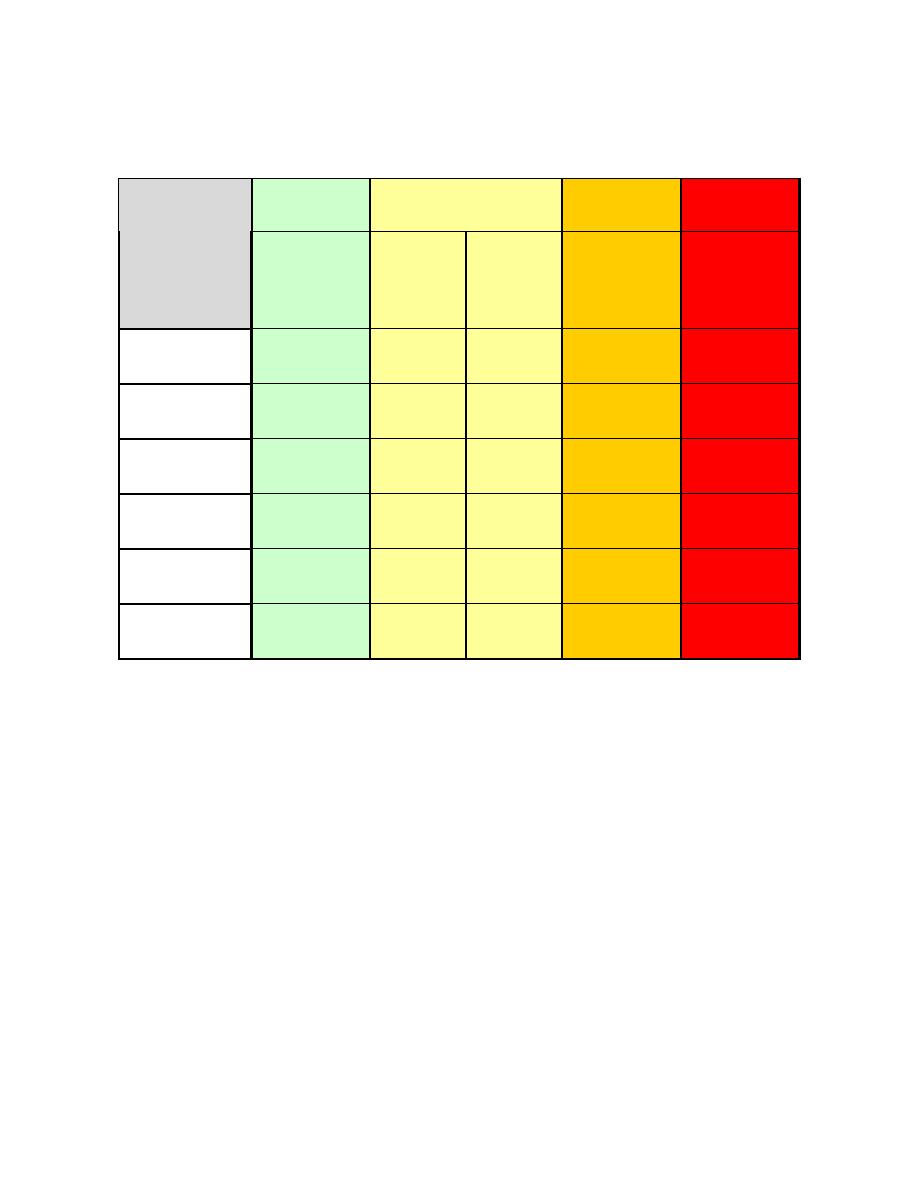
UFC 3-560-01
6 December 2006
Including change 1, 7 December 2006
Table 3-1. Qualified Worker Minimum Working Distances
Flash
Minimum
Prohibited
Limited Approach
Protection
Working
Approach
Boundary
Boundary
Distance (3) (4)
Boundary
Nominal System
Voltage Range
Includes
Includes
Phase to Phase
Exposed
Exposed
Standard
Reduced
From Phase to
(1)
Movable
Fixed
Inadvertent
Inadvertent
Phase Voltage
Movement
Movement
Conductor
Circuit Part
Adder
Adder
10 ft 0 in
3 ft 6 in
50 V to 300 V
(2)
Avoid contact
Avoid contact
(3.05 m)
(1.07 m)
10 ft 0 in
3 ft 6 in
1 ft 0 in
0 ft 1 in
>300 V to 750 V
(2)
(3.05 m)
(1.07 m)
(304.8 mm)
(25.4 mm)
10 ft 0 in
5 ft 0 in
2 ft 2 in
0 ft 7 in
>750 V to 15 kV
(2)
(3.05 m)
(1.53 m)
(660.4 mm)
(177.8 mm)
10 ft 0 in
6 ft 0 in
2 ft 7 in
0 ft 10 in
>15 kV to 36 kV
(2)
(3.05 m)
(1.83 m)
(787.4 mm)
(254.0 mm)
10 ft 0 in
8 ft 0 in
2 ft 9 in
1 ft 5 in
>36 kV to 46 kV
(2)
(3.05 m)
(1.83 m)
(838.2 mm)
(431.8 mm)
10 ft 0 in
8 ft 0 in
3 ft 2 in
2 ft 1 in
>46 kV to 69 kV
(2)
(3.05 m)
(1.83 m)
(965.2 mm)
(635.0 mm)
Notes for Table 3-1:
1. For single phase systems select the range that is equal to the system's maximum
phase to ground voltage times 1.732.
2. The flash protection boundary is determined by a flash hazard analysis. Refer to
Paragraph 4-4 for PPE requirements for the intended work location.
3. The minimum working distance is defined as the distance between energized parts
and grounded objects without insulation, isolation, or guards.
4. The minimum working distance applied to hot sticks is the distance between a
worker's hand and the working end of the stick.
3-1.1.4 Altitude Correction for Minimum Working Distances. Refer to Table 3-2
for altitude correction factors for work performed at elevations greater than 3000 ft
(914 m); the minimum approach distance is determined by multiplying the distances in
Table 3-1 by the appropriate correction factor from Table 3-2.
3-3


 Previous Page
Previous Page
